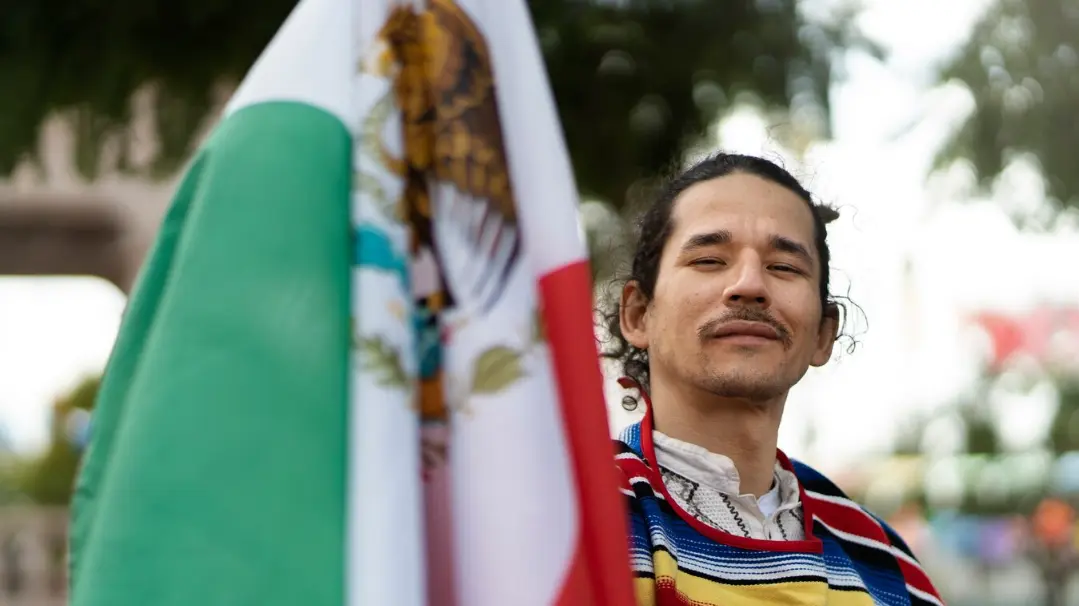When most people think of Mexico, they probably think of Spanish as the main language spoken in the country.
However, did you know that Mexico has more than 60 languages that are still actively spoken by its people?
So, what languages are spoken in Mexico, and how are they unique compared to other Spanish-speaking countries?
Let's explore further!
What are the Official Languages of Mexico?

Mexico recognizes Spanish as the primary language spoken by about 98% of its population in government, education, media, and everyday communication.
However, the interesting fact is that Spanish is only de facto. The Mexican Constitution does not explicitly establish Spanish as the only official language.
The Spanish language's dominance stems from colonialism, which lasted from the 16th century onwards for more than 300 years. At that time, the Spanish colonial government brought not only armies but also their language.
They enforced hispanization policies that displaced indigenous languages. However, many small indigenous communities have retained their ancestral languages, albeit in smaller numbers.
In 2003, the Mexican government took a progressive step by passing the Ley General de Derechos Lingüísticos de los Pueblos Indígenas (General Law of Language Rights of Indigenous Peoples).
The law recognizes that indigenous languages also have official status in Mexico, on par with Spanish, especially in communities that still use them.
This means that in some areas with large Indigenous populations, Indigenous languages can be used in public administration, the education system, and the dissemination of government information.
How Many Languages Are Spoken in Mexico?
As a country with a rich cultural heritage, Mexico is not only home to Spanish but also a variety of indigenous languages that have been passed down for generations.
According to data released by the Instituto Nacional de Lenguas Indígenas (INALI), there are 68 officially recognized indigenous languages, with 364 dialect variations spread across different regions of Mexico.
These languages are mainly spoken by indigenous communities who still maintain their cultural heritage. They include Nahuatl, Mayan Yucatec, Mixtec, Zapotec, Tzotzil, Tzeltal, and many more.
With such rich linguistic diversity, Mexico is not only a country with a strong culture but also one of the largest centers of indigenous language preservation in the world!
Although Spanish dominates, the indigenous language heritage remains an integral part of Mexico's national identity.
Differences Between Mexican Spanish, Latin American Spanish, and Spanish in Spain
Mexican Spanish has a distinctive vocabulary that differs from Spain and other Latin American countries.
The influence of indigenous Mexican languages also plays a role in shaping the Mexican dialect. Check out the explanation and some examples below!
1. Vocabulary
Mexican Spanish has many unique words, such as “chido” (cool) or “cuate” (friend), which are not common in Spain.
The word “coche” in Spain means car, while in Mexico, the more common word is “carro”.
Let's take a look!
English | Mexico | LatAm | Spain |
Car | Carro | Auto | Coche |
Cellphone | Celular | Celular | Móvil |
Juice | Jugo | Jugo | Zumo |
Pen | Pluma | Lapicera (Argentina) | Boligrafo |
Potatoes | Papas | Papas | Patatas |
2. Pronunciation
In Spain, the letters “z” and “c” (before e and i) are pronounced like ‘th’ in English, while in Mexico, the pronunciation is more like “s”.
Mexican Spanish tends to be softer in pronunciation compared to Spanish in Spain.
Here is an example of its pronunciation.
English | Mexico | LatAm | Spain |
Thanks (gracias) | grasias (s) | grasias (s) | grathias (th) |
Shoe (zapato) | sapato (s) | sapato (s) | thapato (th) |
City (ciudad) | siyudad (s) | siyudad (s) | thiyudad (th) |
Zero (cero) | sero (s) | sero (s) | thero (th) |
Dinner (cena) | sena (s) | sena (s) | thena (th) |
3. Grammar
In Spain, “vosotros” is used to refer to “you”, but in Mexico and most of Latin America, the word used is “ustedes”.
The verb conjugation forms also have slight differences, especially in the use of verbs in command or informal forms.
Take a look at the following table!
English | Mexico | LatAm | Spain |
You (plural) | Ustedes | Ustedes | Vosotros |
You eat | Ustedes hablan | Ustedes hablan | Vosotros habláis |
You speak | Ustedes comen | Ustedes comen | Vosotros coméis |
You live | Ustedes viven | Ustedes viven | Vosotros vivís |
Come here! (plural) | ¡Vengan aquí! | ¡Vengan aquí! | ¡Venid aquí! |
Is English Spoken in Mexico?
English is not an official language in Mexico, but it is widely spoken in major cities like Mexico City, as well as in tourist areas like Cancun and Los Cabos.
As well as being a language taught in schools, many Mexicans working in the tourism, business and tech sectors have English language skills to make it easier to communicate with tourists and international partners.
If you want to communicate better when traveling or doing business with Mexicans, mastering English can be a huge advantage.
To that end, you can improve your English skills with EZClass, an online learning platform that offers interactive courses with professional tutors.
With flexible and accessible methods, EZClass helps you learn English anytime and anywhere!
Also read: What Languages Do Argentinians Speak?
Conclusion
Wow, there are so many languages spoken in Mexico! Would you like to travel to Mexico without a language barrier?
Improve your English skills with EZClass now! Also, check out the EZClass blog to discover more interesting articles.
And don't forget to share this article with your friends who are learning English!



